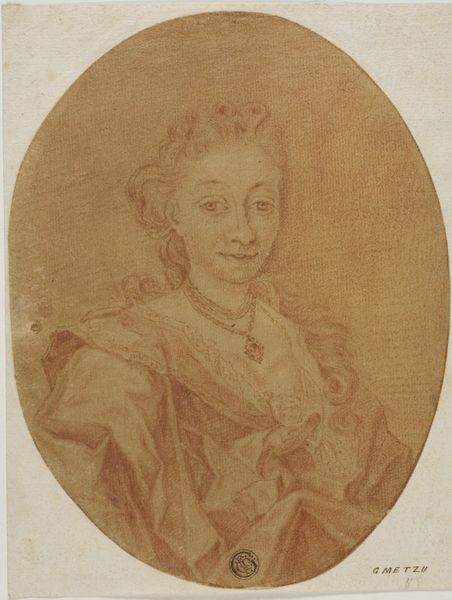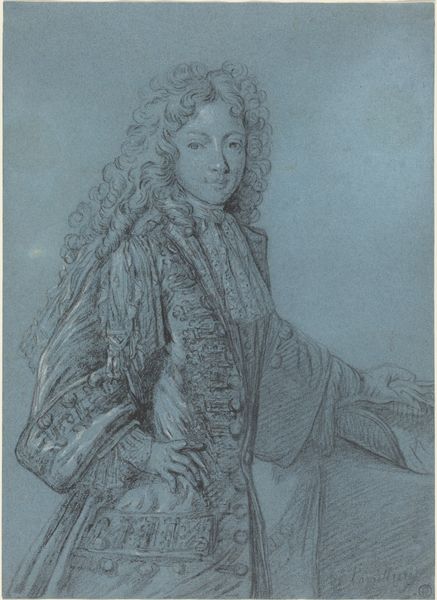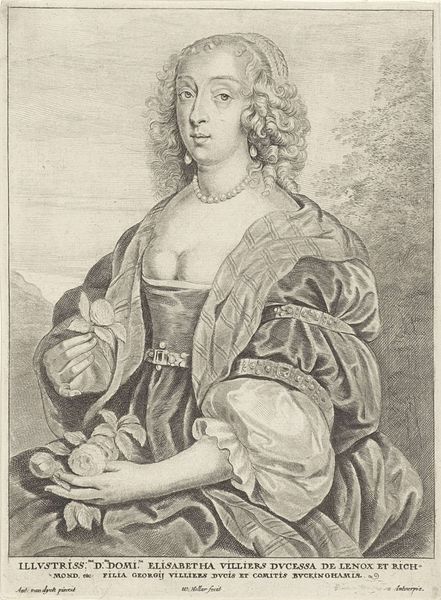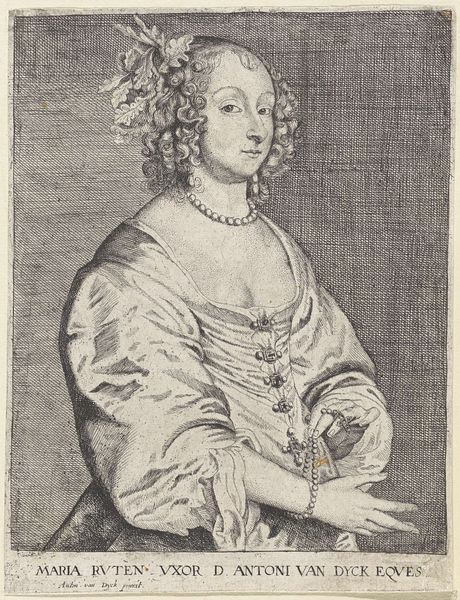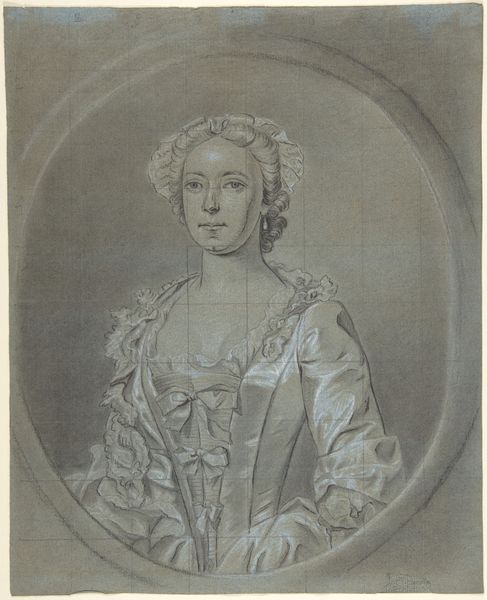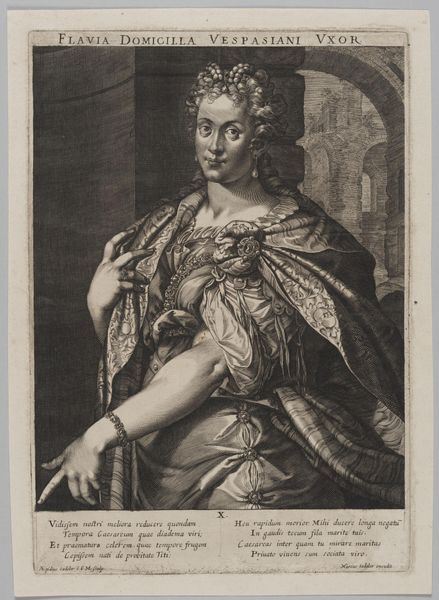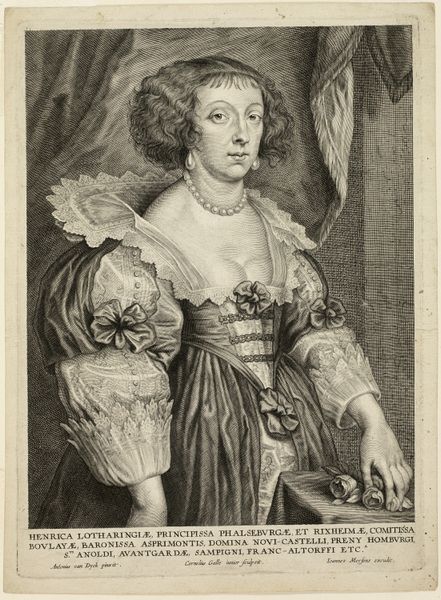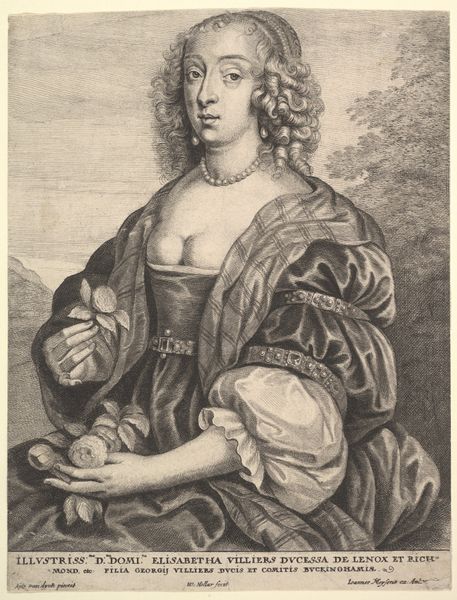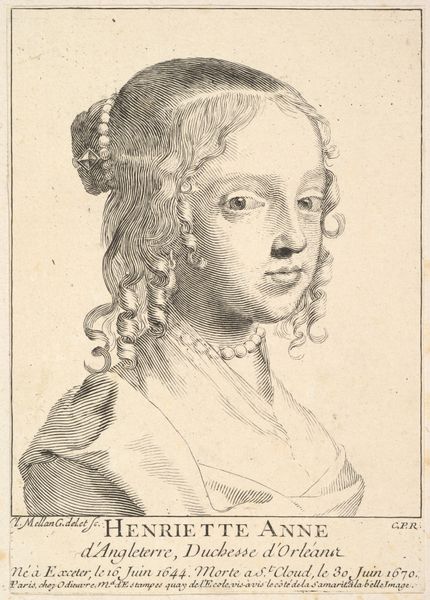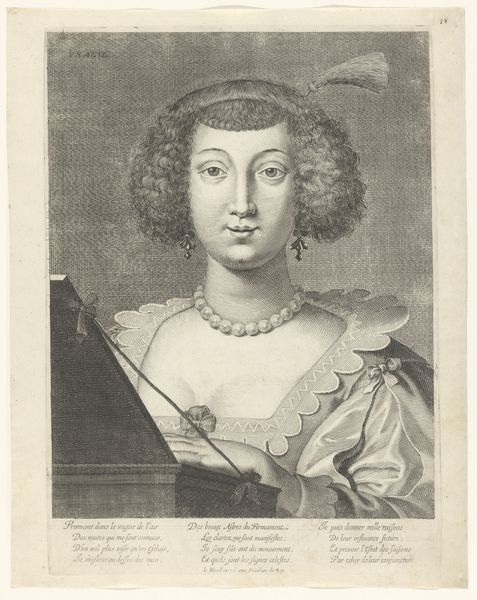
drawing, paper, ink, pencil
#
portrait
#
drawing
#
baroque
#
paper
#
ink
#
pencil drawing
#
pencil
Copyright: Public Domain
Editor: Here we have Cornelis Visscher's "Bildnis eines Knaben als Hirtenjunge," or "Portrait of a Boy as Shepherd Boy," made with ink on paper around 1653. I’m immediately struck by the boy's direct gaze and the contrast between the refined detail in his face and clothing, and the almost caricatured rendering of the sheep. What are your thoughts on how to interpret this piece? Curator: This portrait, steeped in the visual language of its time, presents a fascinating interplay between social performance and pastoral idealization. The boy’s attire, the floral wreath, even the careful rendering of his curls, speak to a staged representation of innocence. This isn’t just a child; it's a carefully constructed image projecting specific ideals. What does it mean to dress up, quite literally, in the tropes of pastoral life? Editor: So you're saying it's less about authentic rural life and more about constructed identity? How would that connect to the Baroque period? Curator: Precisely. The Baroque era saw a rise in staged portrayals of the self, reflecting a societal fascination with artifice and performance. Consider the historical context: were such costumes typical of children at that time, and how might that speak to broader cultural values? Where does the reality of a child’s existence fit within the artificiality of such presentation? What sociopolitical forces were at play here? Editor: That reframes the work for me. I was focused on the individual child, but you're making me think about the broader performance of identity within a specific social structure. Curator: And beyond that, how does this performance speak to enduring notions of childhood, innocence, and class? Does this drawing perpetuate or challenge existing hierarchies? Think of how it functions today when we look back on this piece: who does it speak to? Editor: I see. This has opened my eyes to layers of social meaning within the work that I wouldn’t have recognized on my own. I really appreciate your emphasis on understanding how images construct identity and reinforce specific worldviews!
Comments
No comments
Be the first to comment and join the conversation on the ultimate creative platform.
